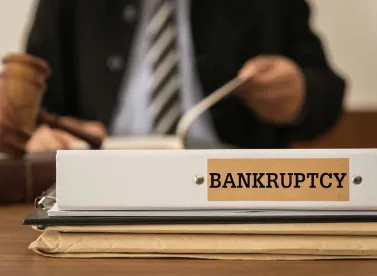Bankruptcy is primarily about “claims.” The debtor seeks to discharge personal liability on claims, while creditors seek payment on their claims. In basic terms, a bankruptcy “claim” is a right to payment. The claim does not need to be fixed, settled, undisputed, or due at the time the debtor files his bankruptcy petition. The official proof of claim form is discussed in more detail here.
A claim can be secured or unsecured, and this designation results in vastly different rights and treatment during the bankruptcy process. Creditors — anyone with a right to payment from the debtor — should have a general understanding of this designation to ensure that their claim receives proper treatment in a bankruptcy proceeding.
Here are some of the basic principles of secured and unsecured claims in a bankruptcy case:
Secured Claims
Under the Bankruptcy Code, a creditor with a right to payment that is secured by either a right of setoff or a lien on property holds a “secured claim.” A lien that is valid and enforceable under non-bankruptcy law, and not avoidable under the Bankruptcy Code, is equally effective in a bankruptcy proceeding. A creditor with setoff rights — the right to net or cancel mutual debts — is also treated as a secured creditor.
The creditor’s lien or unexercised setoff right is its collateral (security for repayment of the obligation). For purposes of the bankruptcy proceeding, a creditor’s claim is secured to the extent of the value of the collateral. Consequently, valuation of the collateral is crucial because it determines the amount of the secured claim.
Notably, any amounts of the creditor’s claim in excess of the value of the collateral are an unsecured claim under the Bankruptcy Code. Creditors should be mindful to properly disclose both secured and unsecured claims when filing their proof of claim. Failure to do so could result in the creditor not receiving payment toward deficiency amounts in excess of the value of the collateral.
Consistent with their superior rights under non-bankruptcy law, secured creditors also have superior rights under the Bankruptcy Code. In terms of priority, secured creditors are at the top of the chain. We will discuss payment and priority in more detail in a future post. Other differences in treatment include:
Collateral Rights
-
A secured creditor’s right to enforce its lien is subject to the automatic stay in bankruptcy. Under certain circumstances, a secured creditor may seek relief from the automatic stay in order to repossess and sell its collateral.
-
In a Chapter 7 case, the debtor may either surrender the collateral or reaffirm the debt and continue making payments.
-
In a Chapter 11 or 13 case, a debtor may retain the collateral if it is necessary for a successful plan of rehabilitation. However, a secured creditor is entitled to adequate protection payments and full payment of its secured claim.
- Competing rights to collateral are determined in accordance with non-bankruptcy law.
Under-secured Claim
-
If the value of the collateral is less than the debt owed to the creditor, the creditor will have both a secured and an unsecured claim (known as bifurcation).
-
An under-secured creditor’s allowed unsecured claim is generally treated like other unsecured creditors.
-
In Chapter 11 cases, the creditor may make an election to forego claim bifurcation and be treated only as a secured creditor.
Over-secured Claim
-
An over-secured creditor is entitled to post-petition interest on its claim to the extent of any surplus value in the collateral.
-
The rate of interest is the contract rate.
-
If the lien is consensual, an over-secured creditor may also recover reasonable costs and fees.
Unsecured Claims
A right to payment that is not guaranteed by collateral is an “unsecured claim.” An unsecured creditor does not hold a lien on property or a right to setoff. In a bankruptcy proceeding, although plans can provide for greater payments to unsecured creditors, unsecured creditors must receive at least the value of the debtor’s non-exempt property. More information about property that a debtor may claim as exempt is available here.
Unsecured claims fall into one of two categories: (1) priority unsecured claims and (2) general unsecured claims. Each category receives different treatment in a bankruptcy proceeding.
Priority Unsecured Claims
Priority unsecured claims are claims that are not secured by collateral but that have priority over other debts under federal law:
-
Examples include alimony, child support, restitution, and administrative claims. The specific classes of priority claims are set forth in the Bankruptcy Code.
-
In a Chapter 7 case, priority claims receive payment in full before any payments to general unsecured creditors.
-
For a Chapter 13 or Chapter 11 plan to be confirmed, the Bankruptcy Code requires that the debtor’s plan pay all priority claims in full unless the holders of the claims agree otherwise.
General Unsecured Claims
General unsecured claims are claims that are not secured by collateral and do not have priority:
-
Examples include credit card debts, student loans, medical bills, and the unsecured portion of an under-secured creditor’s claim.
-
General unsecured claims are very low in terms of priority and often receive very minimal payment.
-
General unsecured claims are generally dischargeable, meaning any amount that is not paid through the bankruptcy proceeding is erased and the debtor is no longer liable on the debt.





 />i
/>i

